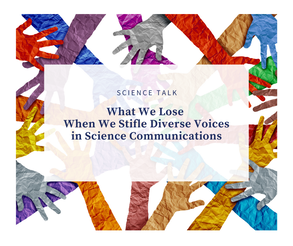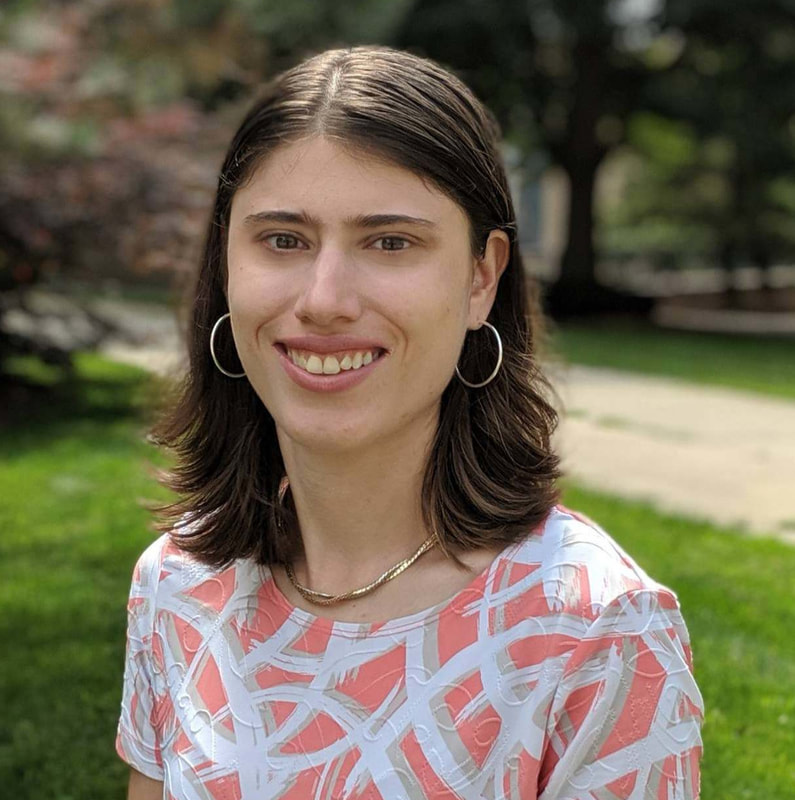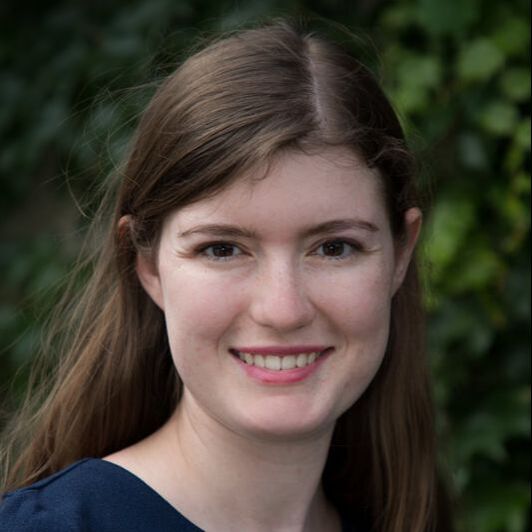
More than ever before, diversity and inclusion is taking center stage in every discussion happening within organizations, workforces, leadership teams, board rooms, classrooms, you name it. It is no different in the science community. While the science communications industry in itself is female dominated, often the influential voices gaining recognition in the space are still white males. Outside of gender, the lack of amplified voices from other cultures, races, ethnicities, and sexual orientations are even more limited.
Science Talk’s Dr. Allison Coffin and Dr. Kiki Sanford sat down with Jessica McNellis from s2s Public Relations and Communications to discuss the importance of diversity and inclusion in the future of science communications.
What are the biggest diversity and inclusion challenges in the science communications space?
Dr. Allison Coffin: We need to elevate diverse voices. Science touches all of us, but science communication doesn’t reflect that reality. There are some tremendous initiatives, like #BlackinSciComm, focused on cultivating a community for Black science communicators to focus on their voices in science, and 500 Women Scientists, which serves as a resource for journalists and policy makers, that are critical steps to meeting that need, but we’ve still got a long way to go. Diversity, equity and inclusion conversations will continue to be more prevalent over the next few years in the science community. It is the lack of representation of diverse voices in science that hinders scientific progress to a large degree. When we’re thinking about climate change, it is largely those who are marginalized and disenfranchised who are most impacted. It is communities of color who are most devastated by the pandemic, on average. We need all minds thinking in different ways at the table for real progress.
Dr. Kiki Sanford: There is a bit of a chicken and egg problem at the moment. Because diversity is an issue in academia, and many science communicators come from academia, there is also an issue with diverse representation in science communication. How do we find individuals from under-represented groups to be communicators and representatives of science if they aren’t seeing others like themselves in those spaces? Is it fair to put more requests for service on the already crowded plates of minority scientists? If people do want to take on the challenge, how can we help them and boost their messages? How do we include more voices more equitably in conversations without pandering? How do we best address history and the very valid distrust that exists within many populations when it comes to science? There really is a lot of work to be done, and many questions to answer, but it’s important we keep asking those questions and keep focused on finding the solutions.
AC: There is always something each of us can do on a personal level to move the needle. A personal challenge I continue to focus on in order to create space for more diverse voices in the community is to set my ego aside, shut up, and shift the spotlight to others.
Do you see a shift happening between generations of science communicators, with younger generations advancing the efforts of diversity and inclusion?
KS: I’ve been working as a science communicator in the podcasting and video space for over 15 years. About a decade ago, I tried to get my own show on the Science Channel. Producers kept trying to pair me with a male co-host, and when I asked why I couldn’t host on my own, I was told that no one wanted to watch a science show with a female host. Now, I am seeing a lot of shows hosted by women popping up and it is really exciting to watch this shift happen. Carin Bondar and Deborah Beberichez were among the groundbreakers, but now the list of female science TV hosts is growing rapidly. Add to that the ease with which anyone can publish media these days, whether through social media, newsletters, websites, podcasts, online-video, and newer apps like TikTok and Clubhouse, and we have a real recipe for change.
AC: At the start of each semester, I survey my students and ask, “Who are the top science communicators you follow?” And every semester the responses – from a group of 20-somethings, all being raised in an era of diversity and inclusion conversations – rarely include even one woman science communicator on the list. The lists are still largely, if not entirely made up of white men. What really makes this a shocking, albeit informal, statistic is that the majority of science communicators are women. So where is that gap occurring? Why is it that even the new, up and coming scientists are largely exposed to male voices, or view these as top of mind influencers to follow? Looking at this example alone, it would indicate we’re not seeing an instant shift towards greater inclusivity between generations. However, looking at Kiki’s experience and other women in science, you can see strides being made. I would say we’re definitely more aware of the lack of progress than ever before and it is driving more demand for change. We all need to remain committed to that progress.
To ask you the same question you ask your students, who are the top science communicators you follow?
AC: I’m biased. Some of my favorite science communicators are past Science Talk conference speakers, like Dr. Rebekah Fenton (@RFentonMD), a physician who focuses on equity in patient care. During COVID I’ve really appreciated the spot-on reporting by Ed Yong (@edyong209) from the Atlantic, and I’m excited that Ed will speak at Science Talk ‘21. One of my new favorites is Dr. Janina Jeff (@inthosegenespod), a geneticist and host of the podcast In Those Genes, which explores the genetics of African Americans through the lens of Black culture. I love Janina’s cadence, real talk, and the hip hop grooves worked into each episode.
KS: It is so hard to choose when there are countless incredible science communicators doing the work. But, since you’re putting me on the spot, I have to say that I think these three women are amazing for their passion, ability, creativity, and efforts: ocean advocate & educator Danni Washington (@danniwashington), astrophysicist and leader in STEM equity advocacy Dr. Jedidah Isler (@JedidahIslerPhD), and neuroscientist and artist Christine Liu (@christineliuart).This is the second Science Talk Q&A in the series. The first Q&A, “How 2020 Shaped the Future of Science Communications,” can be viewed here.



Leave a Reply